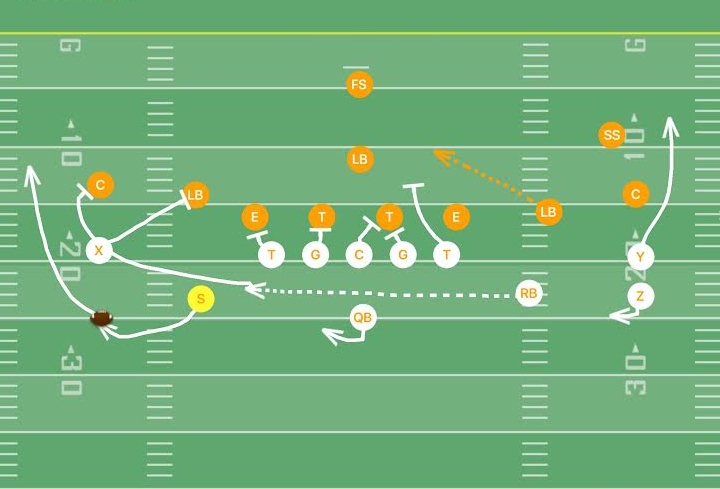The Bubble Route may be one of the most frustrating routes in football. It looks like it is a very simple route that gets quick players the ball in space. Because the bubble is considered an extension of the run game, it must be completed over 80% of the times it is thrown in order for it to be effective. The only problem is that the Bubble involves a player going full speed away from the Quarterback and catching a ball that is thrown on a difficult angle. Because of this, if the Bubble route is going to be a staple of your offense it must be efficiently coached and practiced if it is going to be run successfully in the game.
Coaching Points for the Bubble Route
The first part of coaching the bubble route is to make it clear to the receiver what the purpose of his route is. The success of the route is based on his ability to horizontally stretch the defense. By doing so he puts the defense’s overhang player in conflict. This means that the receiver’s route must be run full speed in a race to the sideline so the overhang player must fly out of the box if he is going to defend the bubble.
The receiver’s first three steps are going to decide how successful the route is. Most receivers are taught to have their inside foot forward. This means that their first step will come from their outside foot which is back. This step should be at roughly 5 o’clock going right or 7 o’clock going to the left. The key is that while this step is at an angle they must explode off their inside foot. This step is the only one that is deliberately away from the line of scrimmage, the remaining ones will be translating the backward explosion downhill.
On his second step the receiver wants to start the process of getting back downhill and gaining yards. On the second step the receiver will start to dip his inside shoulder and get his head and hands around. The goal is to get to the apex of the route on his third step so he can start gaining ground.
By the third step the defender should be heading downhill with his head and hands back to the Quarterback. It’s important to emphasize to the players to get their head and hands around quickly so they can adjust to a poorly thrown ball. The hardest thing to stress to the receiver is that he has to only worry about catching the ball. He has to be able to trust the rest of the receiving corps to make their blocks. When he does make the catch it’s important that he puts the ball in his outside arm and accelerates to the sideline. He should aim to get vertical on what coaches call the “Red Line” which is an imaginary line 5 yards in from the sideline. By getting the ball to the sideline he makes the defenders chase him. Beyond getting away from the defenders and gaining yards by getting the ball all the way to the sideline he is showing the defense that they must cover the whole width of the field.
(See Also) Bubble and Jail Screen Drill
(See Also) Bubble Screen Play
